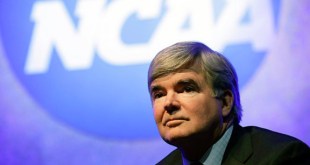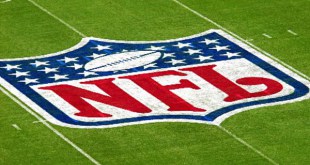On Friday, August 8, the first decision in a wave of litigation against the NCAA hit the shores. The decision by Judge Claudia Wilken of the United States District Court for the Northern District of California is both important and intriguing. The decision is the first time in major litigation that a court has not given deference to the NCAA’s commitment to amateurism when those regulations seem to conflict with antitrust laws. The decision has been hailed by many as “the death of amateurism;” however, a close analysis will show that statement to be a minor exaggeration. In reality, it will merely force the NCAA to make better and more reasoned arguments for what it does.
This article will summarize the decision, first by addressing the NCAA’s asserted procompetitive benefits, then by addressing the Plaintiff’s asserted less restrictive alternatives. Finally the article will address the Court’s orders and decisions and their impact on the future. In doing so this article will describe the more interesting points of the decision, including what they mean and what can be learned from them. On a macro level, it is interesting that the NCAA lost nearly every argument in the case but still managed to escape with a decision that does not drastically alter the status quo.
In the case, the NCAA put forth four main arguments to justify their restraint (requiring student-athletes to sign over NIL rights): i) amateurism as necessary to collegiate sports popularity; ii) competitive balance; iii) integration of academics and athletics; and iv) increased output. Meanwhile the Plaintiffs put forth two less restrictive alternatives: i) allowing schools to pay stipends up to full cost of attendance at their will; and ii) allowing schools to pay limited amounts of NIL revenue above full cost of attendance to athletes, held in trust until they leave school, at the schools option.
Amateurism as a Driver of Popularity
In the decision, Judge Wilken ruled that a “commitment to amateurism” was not a sufficient procompetitive justification with regards to restrictions on payments for name, image, or likeness rights (“NIL rights”). In her decision, Judge Wilken stated that:
“The record reveals that the NCAA has revised its rules governing student-athlete compensation numerous times over the years, sometimes in significant and contradictory ways. Rather than evincing the association’s adherence to a set of core principles, this history documents how malleable the NCAA’s definition of amateurism has been since its founding.”
The NCAA put forth many arguments involving consumer preference and popularity as to why this commitment was necessary. However, with regards to restraints over NIL rights, Judge Wilken shot down these arguments and left a door open to the NCAA at the same time and explained that:
“Although this evidence could justify some limited restrictions on student-athlete compensation, it does not justify the specific restrictions in this case. In particular, it does not justify the NCAA’s sweeping prohibition on FBS football and Division I basketball players receiving any compensation for the use of their names, images, and likenesses.”
So, while Judge Wilken rejected amateurism, as a strict principle, she did acknowledge that it could be a justification for other less extreme restraints by stating:
“The Court therefore concludes that the NCAA’s restrictions on student-athlete compensation play a limited role in driving consumer demand for FBS football and Division I basketball-related products. Although they might justify a restriction on large payments to student-athletes while in school, they do not justify the rigid prohibition on compensating student-athletes, in the present or in the future, with any share of licensing revenue generated from the use of their names, images, or likenesses.”
Thus, per the court, “amateurism” is not a procompetitive justification for a strict “no-payment” policy but may be a justification for restricting “large payments” to players while in school.
Competitive Balance
In what is perhaps a bigger dagger for the NCAA, Judge Wilken rejected the NCAA’s reliance on the “Board of Regents” case from the 1980s, which beatified amateurism[i]. This analysis was part of the rejection of the NCAA’s argument that competitive balance could be a justification for restraints. The court also stated:
“Accordingly, the NCAA may not rely on competitive balance here as a justification for the challenged restraint. Its evidence is not sufficient to show that it must create a particular level of competitive balance among FBS football and Division I basketball teams in order to maximize consumer demand for its product.”
This argument never seemed to hold much water given the relative lack of parity in NCAA sports today. While the NCAA could present different evidence regarding competitive balance in the future, those arguments are equally unlikely to succeed. The fact is that the NCAA today does not really have much competitive balance in FBS football or Division 1 basketball and remains exceedingly popular.
Integration of Athletics and Academics and Increased Output.
Judge Wilken also dismissed almost all of the NCAA’s argument that its restraints were necessary to integrate academics and athletics. She accepted that this integration is a legitimate procompetitive benefit and explained that “[t]he evidence presented by the NCAA suggests that integrating student-athletes into the academic communities at their schools improves the quality of the educational services that they receive.” To put that in antitrust terms, this integration improves the quality of the products provided by the schools, which the athletes “purchase.”
However, Judge Wilken did not find that the NCAA’s restraints were necessary to achieve this goal, stating that “[t]he NCAA has not shown that the specific restraints challenged in this case are necessary to achieve these benefits.” The court went on to say “the only way in which the challenged rules might facilitate the integration of academics and athletics is by preventing student-athletes from being cut off from the broader campus community.”
In a less focused on portion of the case, the court also ruled that the NCAA did not sufficiently present evidence that its restraints were necessary to increase output. The court noted that removing the restraints would not force schools to spend money they do not have, and that schools would be unlikely to drop to a different division if the restriction was removed.
Less Restrictive Alternatives
Even though the NCAA scored a narrow victory in managing to raise, count it, two, procompetitive justification for its restraints, it failed miserably in showing that there were no less restrictive alternatives for its goals of i) better integrating athletics and academics; or ii) maintaining popularity by preventing “large payments” to students while in school. The court focused on two less restrictive alternatives that essentially will act as “safe harbors” for the NCAA moving forward.[ii]
The court found that the NCAA could allow schools to award stipends up to a full cost of attendance amount or keep limited and equal shares of NIL revenues to be distributed to students after they leave college. The Plaintiffs had also put forth a third less-restrictive alternative, which involved allowing athletes to receive money for NIL rights from third parties; however, the court rejected this because of its potential to overly commercialize college athletics which runs counter to the NCAAs legitimate procompetitive goals.
Outcomes, Rulings, and Orders
Because there are less restrictive alternatives for the NCAA’s restraints:
“The Court will enjoin the NCAA from enforcing any rules or bylaws that would prohibit its member schools and conferences from offering their FBS football or Division I basketball recruits a limited share of the revenues generated from the use of their names, images, and likenesses in addition to a full grant in aid.”
However, this ruling has many exceptions for the NCAA. As stated above, two “safe harbors” are carved out for the NCAA. The injunction will not prevent the NCAA from implementing either of them. Additionally, the ruling only applies to payments to players from schools, conferences, or the NCAA. The NCAA may continue to restrict payments to players from third parties for NIL rights. Additionally, the NCAA may restrict payments above full cost of attendance to five thousand dollars ($5,000) per person per year. Any payments above full cost of attendance must be allotted equally to each player on the team (in the same class year). Another win for the NCAA is evidenced when the court stated:
“Nothing in the injunction will preclude the NCAA from continuing to enforce all its other existing rules which are designed to achieve its legitimate procompetitive goals. This includes its rules prohibiting student-athletes from endorsing commercial products, setting academic eligibility requirements, prohibiting schools from creating athlete only dorms, and setting limits on practice hours.”
Curious Questions
The ruling, which can be categorized as both a win for student-athletes everywhere and simultaneously a “good loss” for the NCAA, raises some interesting questions. First, if it is illegal to cap compensation for NIL to zero dollars, why is it legal to set a cap at five thousand dollars per year? As stated above, Judge Wilken accepted that some restrictions on payment were justified in order to maintain the popularity of FBS football and Division 1 basketball. Second, Judge Wilken noted that:
“The NCAA’s witnesses stated that their concerns about student-athlete compensation would be minimized or negated if compensation was capped at a few thousand dollars per year. This is also comparable to the amount of money that the NCAA permits student-athletes to receive if they qualify for a Pell grant, and the amount that tennis players may receive prior to enrollment.”
This is a huge win for the NCAA, as Judge Wilken based her decision on examples where student athletes may already receive money today. In other words, she feels that if popularity doesn’t drop due to Pell Grants or tennis awards in the amount of five thousand dollars, then outright payment of the same amount should not affect demand for NCAA sports. However Judge Wilken did not create the opportunity for sweeping reform and large payments that many NCAA critics wished for.
Another interesting question is whether or not Judge Wilken really feels that antitrust courtrooms are where these disputes should be fought. This was evident when Judge Wilken stated in her closing:
“To the extent other criticisms have been leveled against the NCAA and college policies and practices . . . it is likely that the challenged restraints, as well as other perceived inequities in college athletics and higher education generally, could be better addressed as a policy matter by reforms other than those available as a remedy for the antitrust violation found here. Such reforms and remedies could be undertaken by the NCAA, its member schools and conferences, or Congress.”
This question is relevant since much, if not all, of the pending current NCAA litigation is scheduled to be heard her courtroom.
Moving Forward
The NCAA will appeal this decision stubbornly until it cannot. This will include a decision at a court of appeals level and an en banc review and a petition to the Supreme Court (which is unlikely to be granted cert).
It is interesting to note that given that the NCAA can absolutely live with this decision, there should be a debate about whether or not an appeal makes sense. Looking at Judge Wilken’s decision, it seems unlikely that her court will institute sweeping change in any of the lawsuits to come, and instead, the courts will likely nudge the NCAA along much quicker than it would move itself. Therefore, those looking for a complete overhaul of the system or beheading of the NCAA are likely to be disappointed by the end result of all this litigation.
[i] It should be noted that the language from the Board of Regents case, which the NCAA relied on is merely dicta, did not resolve or analyze any issues in the case, and came from a case which the NCAA lost. [ii] Meaning that the NCAA can do either of these actions and be sure it is not violating the law. The Sports Esquires Putting Sports on Trial
The Sports Esquires Putting Sports on Trial


